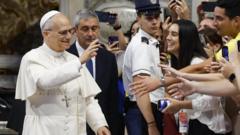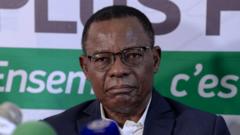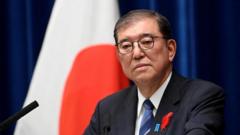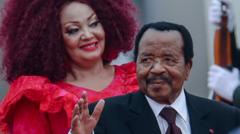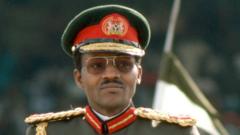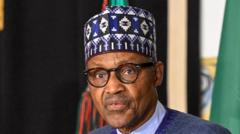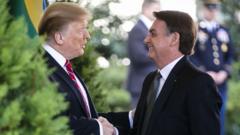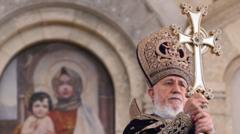Black smoke has emerged from the Sistine Chapel indicating that the 133 cardinals have yet to select a new pope, with two rounds of voting scheduled to resume later today. The unexpected prolongation of this voting process highlights the unique dynamics within this conclave, the first since Pope Francis's passing, as cardinals from diverse backgrounds navigate the complexities of leadership selection amid ideological divides.
The Waiting Continues: Black Smoke Indicates No Pope Chosen

The Waiting Continues: Black Smoke Indicates No Pope Chosen
As the conclave progresses, black smoke signals that the cardinals are still undecided after two rounds of voting in the Vatican.
Black smoke billowed from the chimney of the Sistine Chapel shortly before noon on Thursday, signaling that the assembly of 133 cardinals had not yet reached a consensus on a successor to Pope Francis. This announcement followed an inconclusive morning of voting, compelling the cardinals back to deliberations after a break for lunch.
The atmosphere in St. Peter’s Square shifted from anticipation to disappointment as onlookers, expecting potentially fruitful results, reacted with gasps upon witnessing the black plume. This moment of waiting marked the second day of the conclave, ignited by the passing of Pope Francis last month, and was characterized by an unprecedented gathering of diverse cardinals.
The conclave’s process is deeply steeped in tradition, necessitating a two-thirds majority for a new pope to be chosen. Consequently, without a definitive outcome, additional rounds of voting are scheduled to take place later today. Recent conclaves have concluded within two days, however, discussions within this group reflect a more complex political landscape due to the varying ideological perspectives that represent a generational shift in the church.
As the cardinals traverse this uncharted terrain, concerns rise about the potential fragmentation of priorities within the church. The ideological divide between progressive visions of inclusivity established by Francis and attempts to revert to a more traditional stance remains a hot topic among the voting members.
Past selections have dictated rules to manage the voting duration, with the current conclave proceeding in complete secrecy — free from external influences and involving sacred oaths ensuring confidentiality. The anticipation of white smoke, which will indicate a successful election, continues to keep the public and the cardinals engaged in the waiting game until a decision is reached.
The atmosphere in St. Peter’s Square shifted from anticipation to disappointment as onlookers, expecting potentially fruitful results, reacted with gasps upon witnessing the black plume. This moment of waiting marked the second day of the conclave, ignited by the passing of Pope Francis last month, and was characterized by an unprecedented gathering of diverse cardinals.
The conclave’s process is deeply steeped in tradition, necessitating a two-thirds majority for a new pope to be chosen. Consequently, without a definitive outcome, additional rounds of voting are scheduled to take place later today. Recent conclaves have concluded within two days, however, discussions within this group reflect a more complex political landscape due to the varying ideological perspectives that represent a generational shift in the church.
As the cardinals traverse this uncharted terrain, concerns rise about the potential fragmentation of priorities within the church. The ideological divide between progressive visions of inclusivity established by Francis and attempts to revert to a more traditional stance remains a hot topic among the voting members.
Past selections have dictated rules to manage the voting duration, with the current conclave proceeding in complete secrecy — free from external influences and involving sacred oaths ensuring confidentiality. The anticipation of white smoke, which will indicate a successful election, continues to keep the public and the cardinals engaged in the waiting game until a decision is reached.

